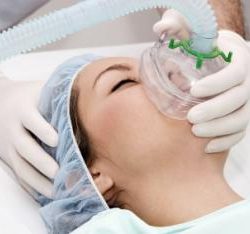4 Strategies for “Medical Necessity” Denial Prevention
 Denials are inevitable, but the key to those pesky denials piling up and costing practices valuable time and money is prevention. Now let’s get something out in the open right away, there will never be a time when denials will stop occurring; however, getting a low percentage of denials is attainable. Fact: 20% of all healthcare denials are ever appealed. It takes time, resources, and money within every practice in order to get a healthcare denial paid. According to Change Healthcare, to get a healthcare claim denial paid, it costs $188 per claim. So, how can a practice reduce denial claims and keep revenue producing?
Denials are inevitable, but the key to those pesky denials piling up and costing practices valuable time and money is prevention. Now let’s get something out in the open right away, there will never be a time when denials will stop occurring; however, getting a low percentage of denials is attainable. Fact: 20% of all healthcare denials are ever appealed. It takes time, resources, and money within every practice in order to get a healthcare denial paid. According to Change Healthcare, to get a healthcare claim denial paid, it costs $188 per claim. So, how can a practice reduce denial claims and keep revenue producing?
Insurance companies can deny a payment for many reasons, one of which is “medical necessity.” A recent report showed the 2nd most common type of denials experienced by a patient is “medical necessity.” Practices should understand that each payer’s medical necessity policy varies greatly and is continuously changing. Also, different payers have different “medical necessity” criteria. Although Medicare and the American Medical Association (AMA) are the foundation of the guidelines, each state also has guidelines on what is considered medically necessary. The insurance companies are definitely running the healthcare industry. With that in mind, this leads me into my next question: How can a provider treat patients, and still be paid for their service?
Depending on insurance contracts held by a practice, a denial based on “medical necessity” may require a practice to perform a series of tasks. One such task is determining if the payer has any policies that will identify a potential denial based on the lack of “medical necessity” before performing any clinical services. Having a denial prevention process that includes knowledgeable staff on payer policies and insurance contracts within a practice will keep cash flowing and reduce overall resources within the practice.
The following 4 step strategy can be effectively administered to help prevent those pesky claims from being denied and costing the practice valuable time and money:
1. Improvement of the documentation process
It’s no secret that having documentation in a practice is vital. Accurate and specific clinical documentation is essential to show relevance, support treatment, and level of care on the procedure. Yet surprisingly, this aspect is often not performed in its entirety, and in terms of insurance and quality assurance issues, appropriate charting will serve both the provider as well as the patient. Poor documentation and lack of specifics are often the reasons for denials. By merely having ongoing education for all physicians and clinical staff helps to understand the “medical necessity” implications of the documentation. The revenue cycle office must have highly skilled personnel, and these personnel need to be in constant communication with the clinical staff to help reduce the claim denials due to lack of supportive documentation. The communication between the revenue cycle office and the clinical staff keeps accuracy and relevance on patient claims before claim submission. This simple fix will then go on to prevent incomplete documentation denial codes on claims.
2. Having a skilled coding team
 A denial for “medical necessity” results in the diagnosis code being not valid for the procedure and will NOT get paid. Denials can be overturned by appeal and often have a high chance of being overturned. However, this will cost the practice time as well as resources. Keep in mind that it costs $188 per claim for a denial to be paid. Prevention of denials will ensure accurate claim submission by reporting the correct diagnosis, which then goes on to inform the payer why a service was performed as well as to support medical necessity. Clinical documentation transfers into codes which insurance companies use to determine if services were “medically necessary.” Coding impacts the revenue cycle by holding the knowledge of the payer policies. Having a knowledgeable and skilled coding team on payer policies, contracts, local coverage determination (LCD), and national coverage determination (NCD) codes, with detailed documentation from the clinical teamwho communicate effectively will enhance prevention of denials. Prevention of denials generates an increase of cash flow into the practice.
A denial for “medical necessity” results in the diagnosis code being not valid for the procedure and will NOT get paid. Denials can be overturned by appeal and often have a high chance of being overturned. However, this will cost the practice time as well as resources. Keep in mind that it costs $188 per claim for a denial to be paid. Prevention of denials will ensure accurate claim submission by reporting the correct diagnosis, which then goes on to inform the payer why a service was performed as well as to support medical necessity. Clinical documentation transfers into codes which insurance companies use to determine if services were “medically necessary.” Coding impacts the revenue cycle by holding the knowledge of the payer policies. Having a knowledgeable and skilled coding team on payer policies, contracts, local coverage determination (LCD), and national coverage determination (NCD) codes, with detailed documentation from the clinical teamwho communicate effectively will enhance prevention of denials. Prevention of denials generates an increase of cash flow into the practice.
3. Updated billing software
The practice should always check to make sure its billing software is up to date on new procedure and diagnosis codes. In addition to updated codes, a claim scrubber should be a built-in feature of your billing software. Claim Scrubbers will enhance checking codesagainst billing rules and give instantaneous feedback. A claim scrubber should never replace a qualified coder. However, it should be more of a tool used to review data before the claim submission. A good claim scrubber can not only catch several errors but help your staff to eliminate common repetitive errors. This will ensure the practice more first-time claim submission success as well as create more efficient office processes. Fewer denials equates to less time wasted and more cash flow into the practice.
4. Prior authorizations
Insurance verification can go a long way in preventing medical necessity denials. A recent report shows that 12% of denials are due to insurance payors requiring physicians to obtain approval before the insurer covers a medication or procedure. The burden of obtaining both verifications and prior authorizations are on the practice because patients are unfamiliar with diagnosis codes or procedure codes and whether the insurance company requires prior authorization for a service by their physician. The front desk staff should be verifying insurance, validating patient benefits, verifying demographic information and obtaining any authorizations before service. Common claim denials are due to missing and/or invalid authorizations, or due to the authorization number for patient claims does not apply, which can easily be prevented. The goal again is to maximize efficiency within a practice to prevent time and resources on claim denials. Collecting the insurance information, verifying insurance benefits, and attaining authorizations for the patient at the front desk does require some extra time from staff, but eliminates significant time later by the billing staff.
A denial based on “medical necessity” may require a practice to perform a range of duties. It is essential that billing staff and clinical staff communicate to understand procedures and insurance contract policies that the practice provides for their patients. Efficient denial prevention processes and communication between knowledgeable billing staff and clinical staff will reduce “medical necessity” claims by a significant amount which results in faster claim payments and continuous cash flow for a practice. The best practices in denial management start with a denied claim, but a denial prevention process begins with claim payments.
Healthcare practices seeking to improve their workflow need to implement our Denial Prevention Program to identify and trend denials, educate staff, and build in efficiencies within the practice to promote long-term financial success. At Global Health Management Services, our knowledgeable and skilled denial team communicates with the practice regularly to ensure consistent revenue. Our Denial Prevention Program will not only help your practice to become more efficient, but educate your staff and recover 5%-10% of the practice revenue. To learn more about how you can promote long-term financial success, promote practice efficiencies and prevent those pesky denials.
Contact us today: email ghms@globalhealthmgt.com
phone: 888-610-2455 or follow us on LinkedIn.






